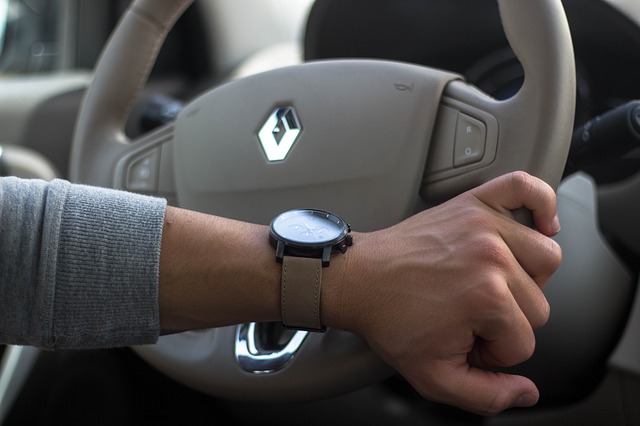Challenges Faced by Women in Motorsports

The motorsports world has seen an increasing presence of women behind the wheel, but the path to recognition and success is still fraught with unique challenges. Understanding these obstacles is crucial for fostering a more inclusive and supportive environment for female racers.
Historical Context
The journey of women in motorsports has been marked by significant milestones and persistent challenges. Historically, women faced substantial barriers in a male-dominated sport. From pioneering drivers like Danica Patrick and Susie Wolff to the recent rise of new talent, female racers have consistently broken new ground. However, despite these advancements, gender-related challenges have persisted, influencing opportunities and perceptions in the sport.
Sponsorship and Funding Issues
One of the most pressing challenges for female drivers is securing sponsorship and funding. Women in motorsports often face difficulties attracting sponsorships compared to their male counterparts. Sponsors tend to gravitate towards well-established male drivers due to perceived higher audience appeal and marketability. This disparity in sponsorship can limit access to competitive equipment and team opportunities for female racers.
Several successful female drivers have overcome these hurdles through strategic networking and personal branding. For instance, Danica Patrick secured high-profile sponsorships with brands like GoDaddy and Coca-Cola, which helped propel her career. These examples highlight the importance of perseverance and strategic partnership-building for female drivers to gain the necessary support.
Media Representation and Coverage
Media representation plays a crucial role in shaping public perception and influencing opportunities in motorsports. Female racers often receive less coverage compared to their male counterparts, which can affect their visibility and marketability. Media portrayals of women in racing can range from inspiring to stereotypical, impacting how female drivers are perceived by fans and sponsors alike.
Positive media coverage can significantly boost a driver’s career by increasing their visibility and attracting sponsorship opportunities. Conversely, negative or limited media attention can hinder their progress. For instance, while successful female drivers like Michelle Mouton have been celebrated for their achievements, others struggle with media bias and insufficient coverage. Addressing these disparities is essential for promoting equality and fair representation.
Team Dynamics and Opportunities
Team dynamics and opportunities present additional challenges for women in motorsports. Female drivers often encounter difficulties accessing high-profile teams and competitive equipment. The competitive nature of the sport means that opportunities can be scarce, and the lack of female representation in top teams can perpetuate a cycle of limited access.
Stories of female drivers overcoming these barriers include those of drivers like Sophia Flörsch, who has made significant strides in Formula 3 despite limited opportunities. By breaking through these barriers, these drivers pave the way for future generations and challenge the status quo of team dynamics in motorsports.
Safety Concerns and Equipment
Safety concerns and equipment also impact female drivers differently. Historically, safety gear and equipment have been designed with average male body sizes in mind, which can create issues for female drivers, especially if they’re injured in an accident due to ill-fitting equipment. While advancements have been made, ensuring that safety equipment is adequately tailored for women remains a concern.
For instance, the development of women-specific racing suits and helmets is an ongoing process, with many female drivers advocating for better fitting and more comfortable gear. The evolution of safety measures is crucial not only for enhancing performance but also for ensuring that female drivers have the necessary protection and confidence on the track.
Cultural and Societal Biases
Cultural and societal biases continue to influence the participation of women in motorsports. Societal attitudes and stereotypes often portray racing as a male-dominated sport, which can discourage women from pursuing careers in racing. These biases can also impact the acceptance and support female drivers receive within the sport.
Initiatives and movements aimed at changing these perceptions are essential for fostering a more inclusive environment. Organizations like the Women’s Sports Foundation and the FIA’s Women in Motorsport Commission work to challenge stereotypes and promote gender equality in racing. These efforts help create a more supportive culture and encourage more women to pursue careers in motorsports.
Work-Life Balance and Personal Sacrifices
Balancing a racing career with personal life and family responsibilities presents unique challenges for female drivers. The demanding schedule of a professional racer often involves long hours, frequent travel, and intense competition, which can impact personal relationships and family life. Female drivers must navigate these demands while maintaining their performance on the track.
Successful female racers often employ various strategies to manage these pressures. Some prioritize time management and seek support from family and friends, while others delegate certain responsibilities to focus on their racing careers. The ability to balance work and personal life is crucial for sustaining a successful career and overall well-being.
Mentorship and Support Networks
Mentorship and support networks play a vital role in helping female drivers navigate the challenges of motorsports. Having access to experienced mentors and supportive communities can provide guidance, encouragement, and opportunities for advancement. Mentorship programs and organizations dedicated to women in racing help address some of the barriers faced by female drivers.
For example, the Women’s Racing Network and various regional racing clubs offer resources and support to aspiring female racers. These networks provide mentorship, training, and opportunities to connect with industry professionals, helping women overcome obstacles and advance their careers.
Progress and Future Outlook
Despite the challenges, there have been significant advancements in addressing gender-related issues in motorsports. Recent initiatives and programs aim to support female drivers and promote greater equality in the sport. For instance, the introduction of the W Series, a female-only racing championship, has provided a platform for women to showcase their talent and gain visibility.
The future of women in motorsports looks promising, with increasing efforts to address disparities and create more opportunities. Continued support from organizations, teams, and sponsors will be essential for driving further progress and ensuring that female racers receive the recognition and opportunities they deserve.

